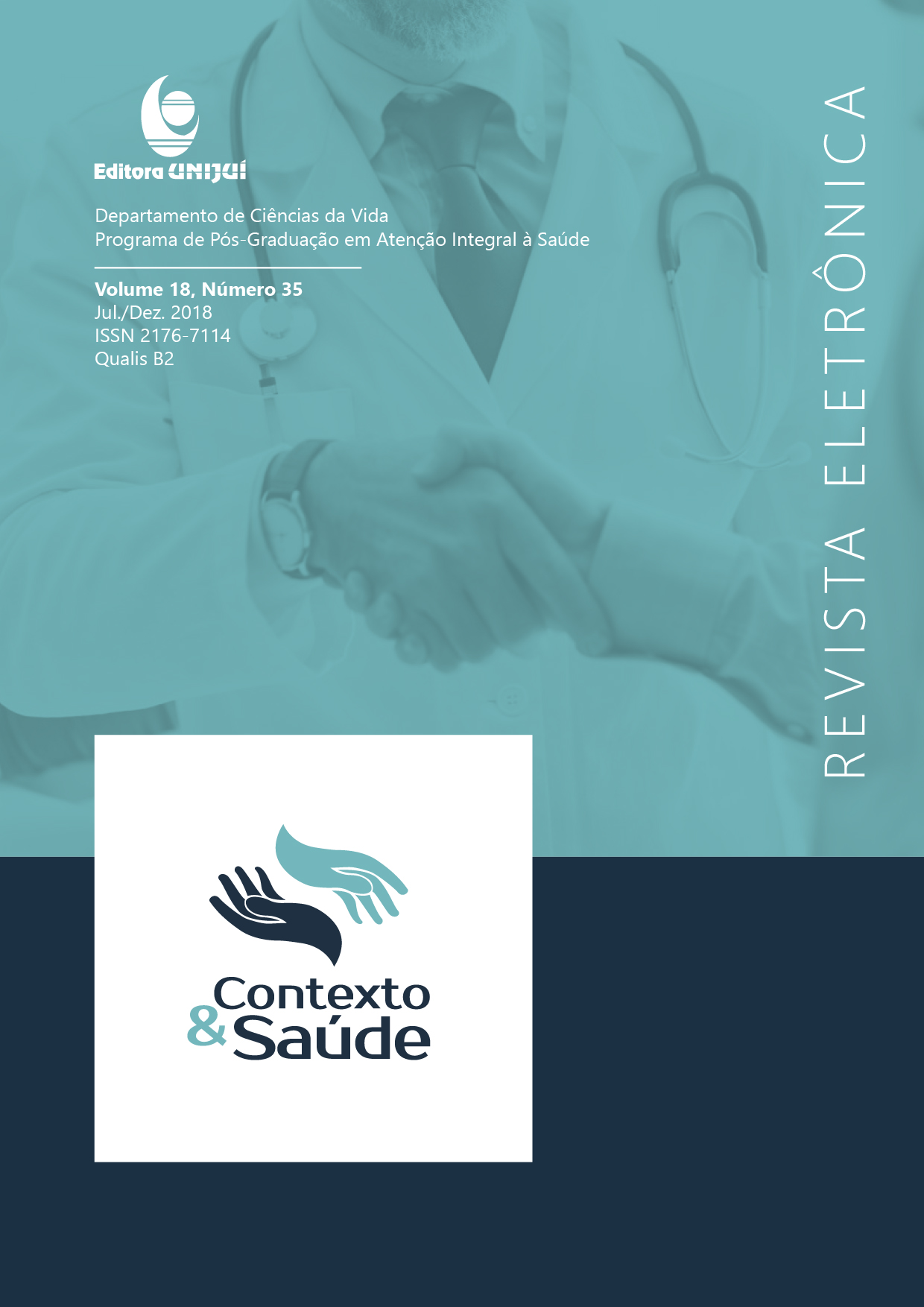ANÁLISE MICROBIOLÓGICA DE UM CENTRO DE MATERIAL ESTERILIZADO HOSPITALAR: IDENTIFICAÇÃO E RESISTÊNCIA A ANTIBIÓTICOS
DOI:
https://doi.org/10.21527/2176-7114.2018.35.95-103Keywords:
Bactérias. Esterilização. Infecção hospitalar. Resistência microbiana.Abstract
Devido a influência da contaminação de superfícies hospitalares na disseminação de microrganismos patogênicos no ambiente hospitalar, este estudo objetivou identificar a microbiota presente em superfícies hospitalares de um Centro de Material Esterilizado (CME) antes e depois da higienização, e avaliar a suscetibilidade das bactérias encontradas frente a antibióticos usados em tratamentos para infecções. As amostras foram coletadas em diferentes superfícies de um CME antes e após a higienização. Os microrganismos foram identificados e após o isolamento, foi realizado o teste de sensibilidade aos antimicrobianos pelo método de disco-difusão conforme padronização do Clinical Laboratory Standards Institute (CLSI). No total de 10 superfícies analisadas em cada momento, foram encontradas 10 cepas antes da higienização e 8 após (n=18). Acinetobacter baumannii foi o microrganismo mais frequente, representando 50% das cepas encontradas; seguido de Yersinia pseudotuberculosis 11,1% e Staphylococcus coagulase negativa (SCN) 11,1%. O teste de susceptibilidade a antimicrobianos foi realizado com as 18 cepas e todas apresentaram resistência a, no mínimo, um antibiótico. Diante dos resultados, concluiu-se que A. baumannii foi o patógeno encontrado com mais frequência, antes e depois da higienização. E os microrganismos que mais apresentaram resistência foram as cepas de A. baumannii, Proteus penneri e SCN, apresentando resistência a quatro antibióticos.
Downloads
Published
How to Cite
Issue
Section
License
By publishing in Revista Contexto & Saúde, authors agree to the following terms:
The works are licensed under the Creative Commons Atribuição 4.0 Internacional (CC BY 4.0) license, which allows:
Share — to copy and redistribute the material in any medium or format;
Adapt — to remix, transform, and build upon the material for any purpose, including commercial.
These permissions are irrevocable, provided that the following terms are respected:
Attribution — authors must be properly credited, with a link to the license and indication of any changes made.
No additional restrictions — no legal or technological measures may be applied that restrict the use permitted by the license.
Notes:
The license does not apply to elements in the public domain or covered by legal exceptions.
The license does not grant all rights necessary for specific uses (e.g., image rights, privacy, or moral rights).
The journal is not responsible for opinions expressed in the articles, which are the sole responsibility of the authors. The Editor, with the support of the Editorial Board, reserves the right to suggest or request modifications when necessary.
Only original scientific articles presenting research results of interest that have not been published or simultaneously submitted to another journal with the same objective will be accepted.
Mentions of trademarks or specific products are intended solely for identification purposes, without any promotional association by the authors or the journal.
License Agreement (for articles published from September 2025): Authors retain copyright over their article and grant Revista Contexto & Saúde the right of first publication.

